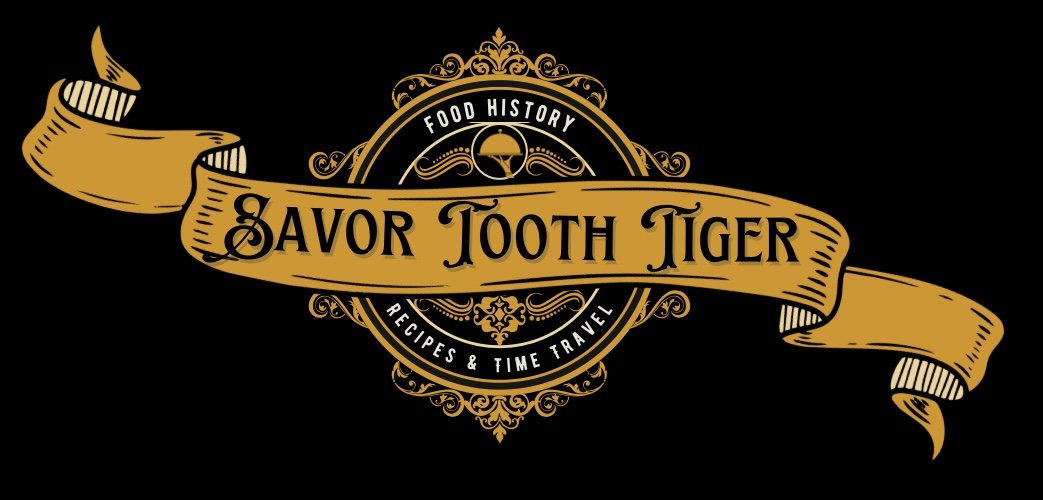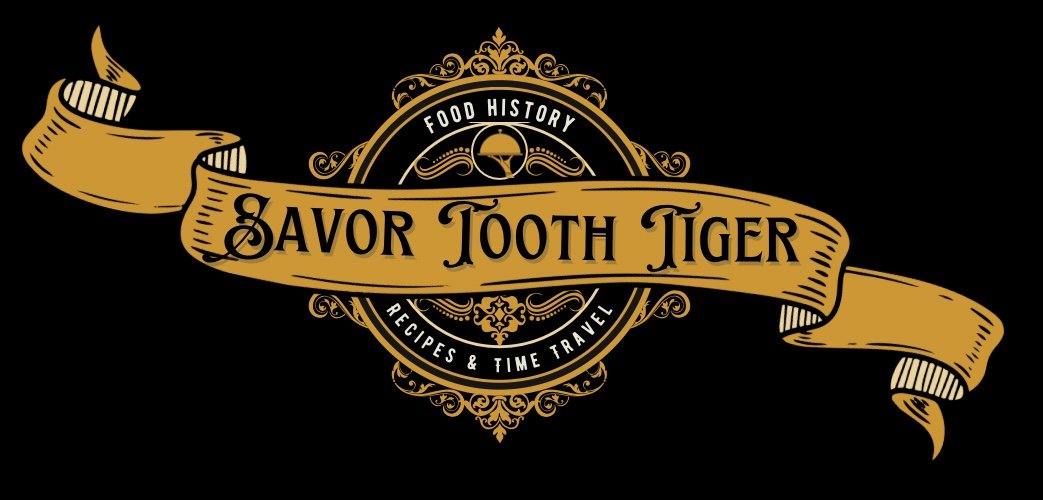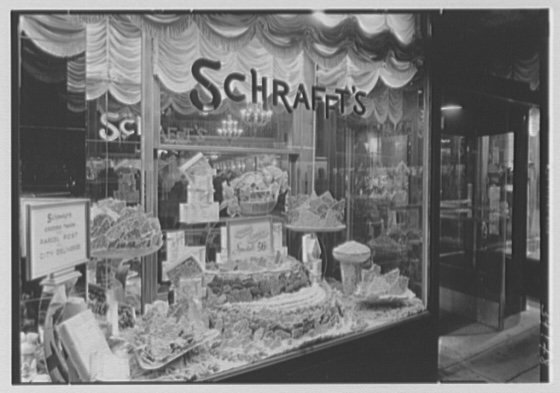1920’s Food
1920’s Ginger Ale Jell-O Salad, Chicken A La King & Icebox Cake
We’re going back 100 years to learn about food in the roaring 20’s. Americans were no longer limited to the meatless & wheatless meals of world war 1. After years of war and pandemic, Americans were finally having some fun, legal or otherwise. Dancing & drinking at speakeasies and jazz clubs, Movies entered the golden age of Hollywood, & Women created new standards of beauty. Women gained the right to vote in 1920 and were finally granted a welcome seat at the restaurant table.
The largest sector of American manufacturing was the food industry by the end of the decade! New culinary innovations like : Wonder Bread, Velveeta cheese, popsicles, & Reese’s peanut butter cups gained popularity in this decade. Betty Crocker entered the culinary world. We saw the emergence of home refrigerators & electric stoves. Sure the “great experiment “ -prohibition of alcohol- brought down the mood a bit, but that didn’t stop Americans from going to restaurants…or from drinking.
Let’s jump in by looking at a typical day of food in the 1920’s.
Breakfast food was lighter than decades before…coffee, grapefruit, toast and welch’s grape jelly were typical. wonder bread was invented in 1921 and sold pre sliced by 1930.
Lunch- Here’s a real menu suggestion for a ladies luncheon- bread and butter sandwiches, weird but ok. Candlestick salad. THIS IS A REAL salad that 1920’s ladies served to their friends and family: banana, pineapple, mayonnaise as the dripping wax, & a cherry on top. I think you’ll agree that it looks exactly like a candlestick.
Dinner- Home dinners typically followed a formula of meat, starch, vegetable sides and a weird salad. Chicken a la King was popular. Jell-o salads like this 1920’s ginger ale salad could be found in any cookbook. For dessert, an icebox cake made from cookies set in the ice box or newly invented refrigerator.
We’re making 3 recipes today.
Starting with our 1920’s ginger ale Jell-o salad. Salads were a big deal in the 20’s, thanks to Major advancements in nutrition science through the discovery of vitamins. Although you’ll see, not all salads are nutrient dense. Gelatin based salads were all the rage and this one sounded so weird I had to give it a go.
Pre-packaged, powdered gelatin and the invention of the home refrigerator made them popular. Before Jell-o, making it was a real process involving many hours of boiling calve’s feet to extract the gelatinous collagen. Other popular 20’s saladS include: perfection salad…a coleslaw in jello. Frozen cheese salad. Savory tomato aspic(sometimes filled with hardboiled egg or sliced tongue!). I found another creative salad made with popcorn, bananas and mayonnaise! Many thought that the fun molded, glimmering shapes would encourage kids to want to eat it. Can you honestly imagine asking your family to eat this? Get in here kids and get a slice of this salad. Look it has chunks! As we saw with Candlestick salad, interesting shapes don’t always make for appetizing food. Salads weren’t all bad though. Caesar Cardini invented the World famous Caesar salad At his restaurant in Tijuana in the 1920’s.
Speaking of restaurants- where did Americans go out to eat? The number of restaurants tripled in the 1920’s! 48 percent of those were lunchrooms. Why the emphasis on lunch? The Free bar lunch died with prohibition, and Working men & women needed somewhere to eat.
Because there was no alcohol, lunchrooms were deemed wholesome enough for respectable women to dine unaccompanied without the possibility of harassment from drunk men. Schrafft’s was one of the first restaurants to actually market TO women. Lunch counters served mainly simple sandwiches, but I did see quite a bit more tongue on the menu than I’d expect. Automats became increasingly popular too. Simply drop a coin in and pull out a sandwich or slice of pie without having to talk to another human. Many full service restaurants suffered or closed under prohibition. Fine French dining without wine was a hard sell. They couldn’t even use wine for cooking!Soda fountains and ice cream parlors did very well as a wholesome alternative to alcohol. In fact, many American breweries like Anheuser Busch stayed in business by using their factories for soda and ice cream production.
American dining got a bit more adventurous in the 20’s. Americanized versions of food like Chop Suey in Chinese restaurants and Spaghetti & meatballs were popular here but not recognized in their native country. Chinese and Italian recipes even made their way into American cookbooks. I found a particularly terrifying recipe for “Italian spaghetti” with American cheese which suggests cooking the pasta for 1 HOUR. I can just see Italian Nonas everywhere shaking their heads.
With the automobile becoming a larger part of American life, many roadside food stops opened to feed hungry travelers on the go. Chains like Howard Johnson’s catered to families in need of trustworthy food on the road. Many African Americans were still excluded from restaurants and public spaces. Jim Crow laws demanded that public spaces be segregated in many states of the south. Some restaurants even demanded that African Americans bring their own plates & cutlery. In the 1930’s, the Green Book helped many people navigate the Jim Crow south by providing a list of safe and welcoming restaurants and hotels. This injustice continued until the Civil Rights Act of 1964 formally ended Jim Crow laws.
On to dinner- I’m making Chicken A La King. Although invented decades earlier, this dish was in every 1920’s cookbook and suggested menu. It made quite the transition from its haute cuisine restaurant days to American housewife cookbooks. But popular nonetheless. There are several conflicting stories about it’s origin. What we do know is that it appeared on some of the most famous restaurant menus of the late 19th and early 20th centuries. The original had sherry in the sauce but we’re in prohibition here so no wine. This recipe comes from Schrafft’s restaurant. It was served over noodles, rice, toast points, in pastry or my favorite with biscuits.
Let’s take a quick look at the 1920’s kitchen. The biggest innovation was the refrigerator, which became available for household use in the early 1920’s…if you could afford it. The 1927 General Electric Monitor Top fridge (which by the way was insanely dangerous because of the chemicals in the compressor) cost $525 dollars! For perspective, you could buy a 1927 Ford Model T for around $360. Clarence Birdseye developed a new method of quick freezing in the 20’s, bringing frozen food home to Americans. Coal or wood fired stoves of previous decades were replaced by gas and electric ranges. Hoosier cabinets were designed to house and organize ingredients. Pyrex cookware became popular made from new glass technology developed in World war 1. Grocery Shopping adopted a new model. Piggly Wiggly opened the first self service grocery store in 1916. Before this innovation, customers had to request food from behind the counters of various departments. The shopping cart didn’t make its super market debut until 1930’s. Many foods like Ice and milk were still delivered at home.
Now for dessert- 1920’s food may have been dainty but they absolutely did not skip dessert. A favorite was icebox cake. No real baking was involved and the newly invented refrigerator did the work. Nabisco chocolate wafers used for 100 years to make these icebox cakes were just discontinued. Nabisco suggests using Oreo thins as a substitute but I have a better idea. Nabisco Oreos were invented in 1912 but they were not the first. Oreos were a knockoff of Hydrox cookies, invented in 1908.
My Grandpa used to eat several hydrox cookies a day, spouting their superiority to anyone who would listen until they were discontinued in 1999. After years of complaints from loyal customers, hydrox made its return. Faithful nonconformists every where cheered! Whatever the cookie, icebox cakes remain popular to this day. Just remember who created the original when you make your cookie choice.

1920’s Ginger Ale Jell-O Salad
Ingredients
- 2 Tablespoons unflavored powdered gelatin
- 1/2 cup cold water
- 1 cup boiling water
- 3 Tablespoons sugar
- 12 ounces Ginger Ale
- juice of 1 lemon
- pinch salt
- 1/2 cup diced canned pears
- 1/2 cup diced canned peaches
- 1/2 cup diced canned pineapple
- 1/3 cup chopped walnut
Instructions
- Spray a jello mold with cooking spray or brush with oil.
- Soak the gelatin in cold water in a large bowl until soft. Add the boiling water and stir until dissolved. Add the sugar, ginger ale, lemon juice, salt and stir until mixed.
- Chill in the fridge for 10 minutes until it begins to set a bit.
- Fold in the fruit and nuts.
- Pour contents into a jello mold and refrigerate until completely firm (several hours).
- To remove from the mold, invert the mold onto a plate. If you’re having trouble removing it, you can set the mold in warm water for a few moments. Don’t let it sit too long or the jello can melt and the mold won’t be as precise (this sadly happened to me.)

Schrafft’s Chicken A La King
Ingredients
- 1 stick unsalted butter
- 1/2 cup all purpose flour
- 2 cups chicken broth
- 1/4 cup heavy cream
- 1/2 cup milk
- 2 egg yolks
- 1 pound chicken tenders or chicken breast (diced)
- 8 ounces button mushrooms (diced)
- salt and fresh ground black pepper
- 2 tablespoons diced pimentos
Instructions
- Cook diced chicken and mushrooms in a large skillet over medium-high heat until well browned. Remove and set aside.
- Heat butter over medium heat. Add flour. Stir or whisk the roux until golden, a few minutes. Add salt and pepper.
- Add chicken stock. Whisk to combine the sauce and remove lumps. Cook for a few minutes until the raw flour taste is gone.
- Add the milk & cream. Adjust salt and pepper if needed.
- Add the chicken, mushrooms and pimentos. Stir to combine.
- Serve with biscuits or on noodles, rice or toast points.

Icebox Cake
Ingredients
- 1 13 ounce package of chocolate wafer cookies (Hydrox or Oreos)
- 2 cups heavy whipping cream
- 2 Tablespoons powdered sugar
- 2 teaspoons vanilla extract
Instructions
- Using an electric mixer whip the cream with the sugar and vanilla.
- In a metal loaf pan lined with plastic wrap, fill the bottom layer with half of the whipped cream. Using a butter knife, spread a layer of whipped cream between each cookie and line them all up neatly into the pan. Depending on your pan, you should be able to get 3-4 layers of cookies. You can arrange them any way you like as long as there is whipped cream between the cookies.
- Add the rest of the whipped cream on top and spread evenly.
- Wrap with plastic wrap. Refrigerate for several hours. I freeze my ice box cake for about 30 minutes before serving so that it holds its shape while removing from the plastic wrap.
- Place the cake on a platter and smooth the whipped cream. Top with chocolate shavings and a maraschino cherry. Serve in slices.





